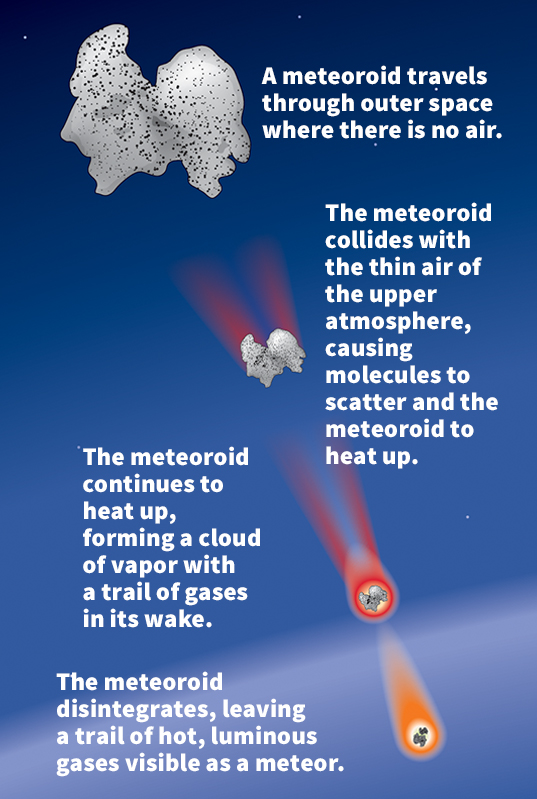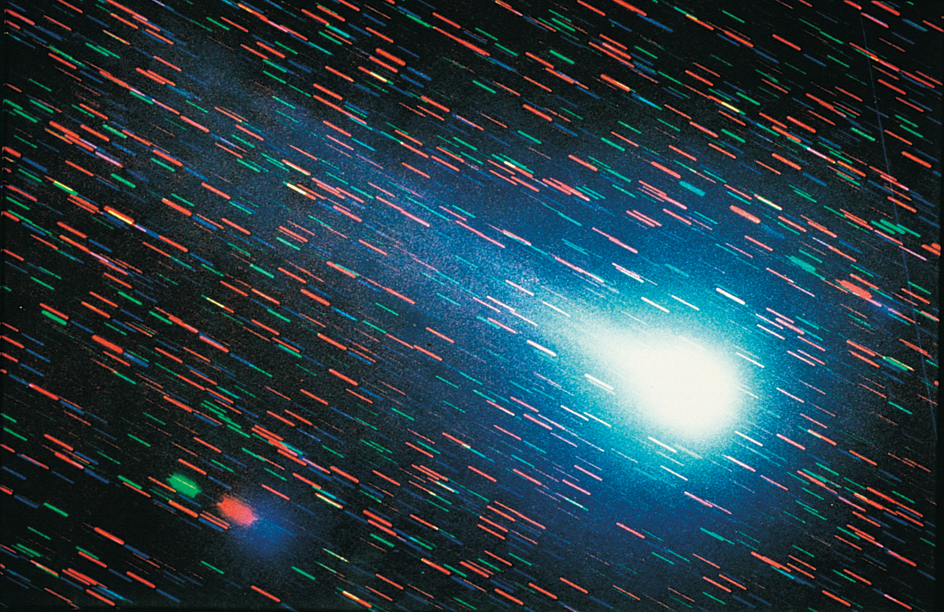Meteor shower is an astronomical event in which a high number of meteors can be seen streaking across the sky over a period of several nights. A meteor is a streak of light that appears in the sky when a piece of matter enters Earth’s atmosphere from space at high speed. Such a piece of matter is called a meteoroid. Meteors are sometimes called shooting stars or falling stars. On a typical night, only a few meteors per hour can be seen crossing the sky. During the peak of a major meteor shower, however, observers may see 10 or more meteors per hour. Outbursts of more than 1,000 meteors per hour are called meteor storms.

As seen from the ground, all the meteors in a particular shower appear to come from the same direction in the sky. This direction is called the radiant of the shower. A meteor shower is generally named for the constellation in which its radiant is located. For example, the radiant of the Perseid meteor shower lies in the constellation Perseus .
A meteor shower occurs when Earth passes through a stream of debris left behind by a parent body, usually a comet . Gravitational interactions, solar heating, or other forces cause a parent body to release meteoroids that spread out in a vast stream throughout its orbit . The rate at which meteors appear generally increases, peaks, and then decreases as Earth moves into and then out of the stream.
The characteristics of a meteor shower—including its duration, intensity, and the type of meteors produced—depend on the composition of the parent body and the characteristics of its orbit. For example, if the parent body’s orbit intersects Earth’s orbit at nearly a right angle, Earth will move quickly through the stream, resulting in a short meteor shower.
Earth may move through the same stream twice a year, resulting in two different meteor showers. For example, Earth’s passage through the stream of Halley’s Comet results in the Eta Aquariids from mid-April through May and the Orionids in October and early November. 
Astronomers have identified various comets as the parent bodies of most meteor showers. Asteroids are the parent bodies of several other meteor showers. Astronomers have not yet identified the parent bodies of all known meteor showers.
